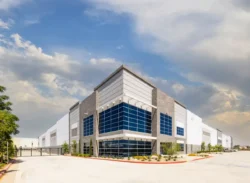How Office Building Quality Will Shape Value in 2026
Published
November 10, 2025
Published
November 10, 2025

2026 is knocking on our door, and investors who’ve taken proactive steps to refresh and future-proof their office assets in the last couple of years are reaping the rewards. Upgraded, well-located buildings continue to attract strong tenant demand, while less-maintained stock are at risk of falling behind in a market where tenant’s appetites mean everything. That’s where the office market appears to be headed in 2026.
Landlords that are prioritising quality, well-managed assets will have themselves to thank down the road. But those who’ve ignored the growing demand for quality in office premises might regret their decision not to act. The term being used for those assets is “aged out”.
“Aged out” refers to buildings that’ve fallen behind the market’s expectations in tenant appeal, to the point they’re no longer seen as a valuable premises to lease or purchase without major reinvestment. And, according to several major agencies, 2026 might be shaping up to be the year when some of Australia’s secondary office stock officially tips into this category.
How we got here

Across Australia’s capital cities, vacancy rates have climbed to their highest levels in decades (around 14.3 per cent nationally after a 30-year high in mid-2025) and pundits expect those numbers to rise further into 2026 as new premium developments come online.
However, not all cities are following the same path — Perth, Adelaide and parts of Brisbane continue to show steady leasing activity, particularly among well-located A-grade buildings that have maintained modern fit-outs and energy efficiency.
Older “B”, “C” and “D” grade office buildings (often dubbed secondary stock) are feeling the full weight of this vacancy shift. Some older assets are experiencing pressure to modernise, while others that have already undergone refurbishments are benefiting from renewed tenant interest. The “flight to quality” that began after the pandemic is now evolving rather than accelerating, and it’s rewarding landlords who’ve invested in quality improvements that align with tenant expectations for amenity and sustainability.
Why office landlords need to take note
Secondary grade office assets have seen values fall much faster than prime stock, with some estimates suggesting declines of nearly 30 per cent since 2022. Conversely, A-grade and newly repositioned assets are proving resilient — some even achieving stable or rising rents thanks to stronger tenant retention.
Meanwhile, leasing conditions are fragmenting. Tenants want smart systems, sustainable design, end-of-trip facilities, flexible layouts and proximity to transport and hospitality—not dated foyers and dim corridors. The cost to retrofit these standards is steep, can be significant, yet many owners are finding targeted upgrades deliver measurable value and extend an asset’s relevance. As a result, some secondary stock faces competitiveness challenges, a trend industry insiders expect to stabilise once the current wave of premium supply is absorbed through 2026.
For existing investors of secondary stock

Put it this way: it’s worth reassessing strategy rather than rushing to exit.
The conversation isn’t just about vacancy rates; it’s about positioning for the next phase of the market cycle. Start by reassessing your building’s true status. If you’ve recently completed upgrades or enhanced amenities, you’re likely well-placed to benefit as tenants gravitate toward modern workspaces. If your asset has slipped from “A-grade” to “B-grade”, consider incremental improvements to protect rental appeal. Check where rents and incentives sit relative to competitors — even small gains in presentation and amenity can help narrow that gap.
Look at your lease expiry profile heading into 2026. Are your key tenants locked in long-term, or are major renewals due next year? If leases are rolling over and the building isn’t up to scratch, you may need to offer short-term incentives or targeted upgrades to keep occupancy strong — a manageable adjustment rather than a crisis. With many tenants consolidating into fewer, higher-quality spaces, owners of refreshed buildings are well-positioned to capture that demand.
The numbers speak volumes
Market data is already confirming the divide. Premium buildings are maintaining occupancy and rental growth, while secondary stock faces a period of adjustment as it realigns with tenant expectations. Encouragingly, investors who acted early to reinvigorate their assets are already seeing longer leases and improved valuations as the market rewards quality.
And of course, rising construction costs could also mean the gap between refurbishment cost and achievable rent is requires careful planning to ensure returns justify spend. Selective upgrades — from energy efficiency to end-of-trip amenities — are proving both viable and value-accretive without the need for full redevelopment. In other words, the economics now favour active asset management over passive holding, and those who adapt are likely to capture the upside as the market stabilises.
The takeaway

2026 might not just be another year in the office cycle. It could be the point where Australia’s secondary office buildings begin to differentiate more clearly by quality and tenant experience.
For investors, the question isn’t if the shift happens, but how to best respond. Those who’ve invested in quality and upgrades are already seeing returns, and those considering similar steps still have time to act before the next leasing cycle tightens. Whether you choose to upgrade, reposition or exit, the message is reassuring: well-managed assets with strong fundamentals remain a safe harbour in a changing market.
Want more key market insights like this one, straight to your inbox? Subscribe to our monthly newsletter and join +1,000 investors benefitting from our news, views and expertise. We never spam you and you can unsubscribe anytime.






